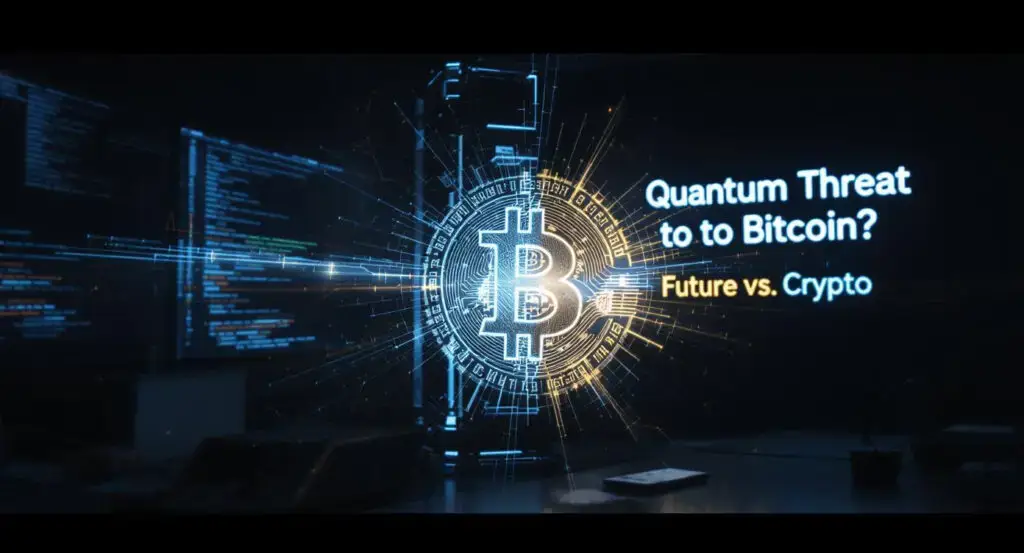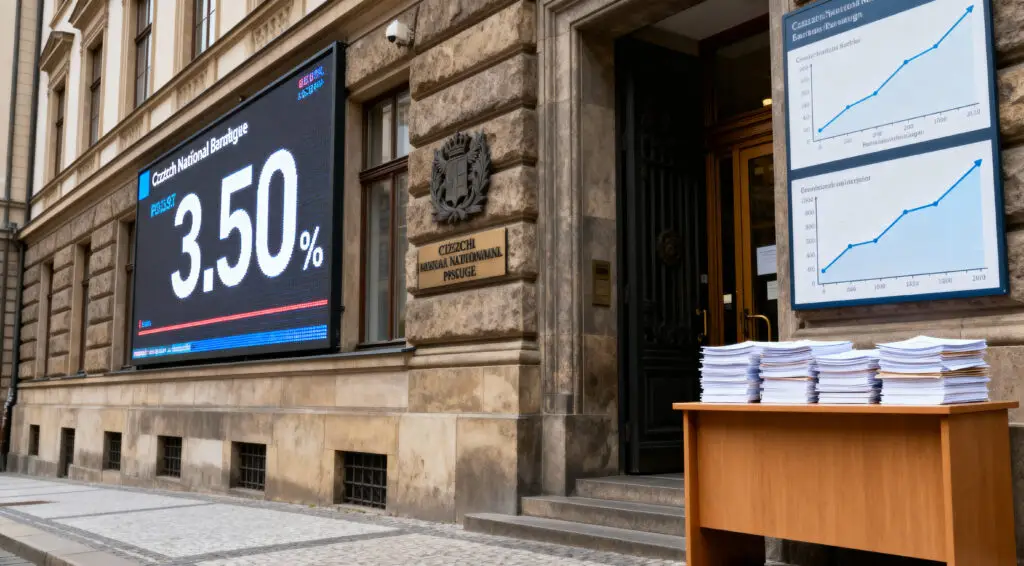The Bitcoin network has enjoyed a remarkable 15-year run of security and stability, a testament to its underlying cryptographic infrastructure. However, the very foundation of this security, elliptic curve cryptography (ECC), which was established in 1985, is now facing an intensifying threat from the emerging field of quantum computing. Concerns about ECC’s impending obsolescence are growing each year, posing what many believe could be the biggest challenge yet to the network’s long-term security. Experts are increasingly warning of a “Q-Day,” a moment when quantum computers become powerful enough to break current encryption, potentially compromising digital assets like Bitcoin.
The Quantum Threat: A Consultant’s Revelation
Kapil Dhiman, CEO of Quranium, a Layer 1 blockchain protocol built with post-quantum security in mind, shared his journey to understanding this looming threat. During his consulting days at PwC, Dhiman observed a “recurring blind spot” in the industry: quantum computing. While the focus largely remained on scaling and interoperability, few seriously considered the “existential threat” that quantum computers pose to existing cryptographic infrastructure, including the foundational security of blockchain networks.
Dhiman realized early on that this was not a distant, theoretical risk. The rapid pace of advancement in quantum technology, with “quantum advantage edging closer,” made it clear that immediate action was necessary. By late 2023, he recognized that the entire digital world, from decentralized finance (DeFi) to identity systems, could be compromised without robust, quantum-proof infrastructure. This realization led him to co-found Quranium in early 2024 with Zeeshan and Yaduvendra, dedicating his full attention to building a blockchain designed to be quantum-secure, AI-native, and ready to protect the next era of the internet.
“Q-Day”: An Invisible, Ticking Time Bomb
Dhiman defines “Q-Day” as the moment quantum computers acquire sufficient power to break widely used cryptographic systems, including RSA, ECC, and the algorithms currently securing most blockchains and online banking. Unlike a predictable event like Y2K, he warns that “it won’t be a neatly marked day on the calendar.” Instead, a breakthrough could occur quietly in a lab or, more ominously, “behind closed doors in the hands of adversaries.” This silent arrival means that the digital world might only realize the breach “after the damage is done,” making the threat exceptionally dangerous due to the absence of a global countdown clock.
The timeline for Q-Day remains uncertain, with some estimates suggesting it could arrive “by 2030.” However, even before quantum hardware is fully realized, the threat is tangible due to “store now, decrypt later” (SNDL) strategies. This involves adversaries harvesting encrypted data today, patiently waiting for quantum computing power to catch up and decrypt it in the future. The consequences for Bitcoin are particularly dire; Dhiman warns that it is “acutely vulnerable.” He recently stated in WIRED that the “only viable fix would be a hard fork, requiring 51% consensus across the network and a coordinated migration of funds.” Without such a proactive measure, Bitcoin, he cautions, “could collapse overnight,” likening it to “a ticking time bomb.”
Beyond Wallets: A Civilization-Level Trust Issue
While many in the crypto community primarily associate quantum computing with the threat of compromised wallets, Dhiman emphasizes that the problem’s scope stretches far beyond financial loss. Ignoring this existential threat, he warns, could lead to “the foundations of digital trust breaking down.” Modern systems underpinning our daily lives—banking, healthcare, messaging apps, cloud platforms, and AI services—all rely on cryptographic systems that were never designed to withstand a quantum-capable adversary.
If quantum computers gain the ability to break widely used encryption like RSA or ECC, the implications are severe: banks could be compromised, personal messages exposed, and deeply sensitive systems such as national IDs or military communications intercepted. The worst-case scenario paints a bleak picture of an “AI system trained on poisoned data or manipulated in real-time,” or “diplomatic secrets leaked from old encrypted emails.” Ultimately, Dhiman stresses, this is “not a tech issue; it’s a civilization-level trust issue,” threatening the core tenets of identity, privacy, and sovereignty in the digital age.
Global Regulators Grapple with Quantum Control
The profound implications of quantum computing mean that regulators worldwide are just beginning to grapple with how to manage this explosive technology. While quantum systems are currently expensive, centralized, and primarily confined to a few governments, labs, and major tech players, offering a natural, albeit temporary, control over access, this situation is not expected to last indefinitely. Dhiman points out that history, particularly with AI and other frontier technologies, shows that once tools become “smaller, cheaper, and more available, the risk multiplies.”
Despite the challenges, regulatory moves are emerging. The U.S. has already implemented export controls on quantum technologies, with the EU, Switzerland, and other countries following suit. Although a comprehensive global treaty is yet to materialize, there is a growing awareness that this technology cannot remain ungoverned. Dhiman believes that while access may not be as tightly controlled as nuclear weapons, a “managed chokehold” is forming through restrictions on exports, funding, and cloud-based access to quantum infrastructure. He stresses that readiness is paramount, as “the only real defense is upgrading our infrastructure.”
The Power of Global Collaboration
Dhiman firmly believes that countering the quantum threat requires not only technological advancement but also robust global collaboration. He highlights that a quantum attack “doesn’t respect borders,” and if encryption is broken in one part of the world, “the ripple effects can go global in seconds.” His discussions with individuals across regions like Switzerland, the UAE, the U.S., and Southeast Asia, reveal a significant shift towards recognizing this shared vulnerability.
Optimism, though cautious, stems from visible progress: governments are investing in quantum readiness, enterprises, especially in finance and identity, are asking critical questions, and cross-border partnerships are forming. South Korea stands as a prime example, with its “National Strategic Plan for Quantum Science and Technology” initiative heavily centered on international collaboration to build a secure ecosystem. When combined with efforts from the EU, India, and strategic bodies like the World Economic Forum and CSIS, a “fragmented but growing fabric of collaboration” is evident. Dhiman stresses that this “can’t be a wait-and-watch moment” and that moving faster than quantum itself is key to ensuring a “smooth, secure, and inclusive” transition that can also unlock new opportunities for secure, intelligent infrastructure globally.
Major Players Sound the Alarm
BlackRock’s recent public statement warning customers about Bitcoin’s vulnerability to quantum computing marked a significant turning point. This was perhaps the first instance where a high-profile traditional asset manager publicly addressed such a specific, long-term cryptographic threat, sending a strong signal that the issue is no longer confined to specialized crypto circles. The alarm bells are now ringing in corporate boardrooms, compelling a wider range of financial institutions and tech giants to confront this challenge.
Beyond merely raising awareness, major companies are actively engaging with post-quantum security. Tech behemoths like Google, IBM, Microsoft, and Amazon are not only advancing quantum hardware development but are also heavily investing in the development and piloting of post-quantum security standards. Cloud providers, for instance, are beginning to implement quantum-safe protocols for their enterprise clients. Financial giants such as JPMorgan and Visa are also actively researching methods to future-proof their sensitive systems against quantum attacks. However, Dhiman notes a “disconnect,” observing that many efforts remain siloed, focusing more on research and innovation than on a coordinated, industry-wide defense strategy. This is particularly challenging for decentralized ecosystems like Bitcoin, where achieving consensus and coordinated change can be a monumental task that requires substantial time and collective action.
Transitioning to Quantum-Proof Wallets
A recent Quranium survey revealed a critical insight: while “78% [of crypto holders are] willing to switch for quantum-safe security,” most have “no idea how to do it.” Dhiman attributes this not to user fault, but to the current wallet ecosystem’s failure to provide clear pathways to quantum-proof solutions. He emphasizes that from a user’s perspective, this transition “shouldn’t be complicated.” Quranium’s QSafe wallet, for example, is designed to feel like any modern wallet with an intuitive interface, but it leverages post-quantum cryptography algorithms like SPHINCS+ and ML-KEM by default, securing keys, backups, and transactions against future quantum attacks.
Users can take immediate action by creating such a wallet, securing their recovery phrase, activating built-in post-quantum settings, and transferring assets. There is “no need to wait for a protocol upgrade or a hard fork.” For those using vulnerable wallets, the crucial first step is to gain awareness of the quantum threat and whether their current provider is even addressing it. Dhiman notes a shift in user behavior towards treating wallets more like banks, but cautions that unlike traditional banks, crypto users cannot rely on regulators or insurance for backup. This self-custody model, while empowering, demands better tools and increased individual responsibility for security.
The Dormant Bitcoin Dilemma: A Quantum Raider’s Prize
One of the “most uncomfortable truths” about the quantum threat, according to Dhiman, is the vulnerability of dormant bitcoins. These assets, particularly those in old wallets with exposed public keys that have seen no activity for years, represent “low-hanging fruit for quantum computers.” If Q-Day arrives before Bitcoin.























